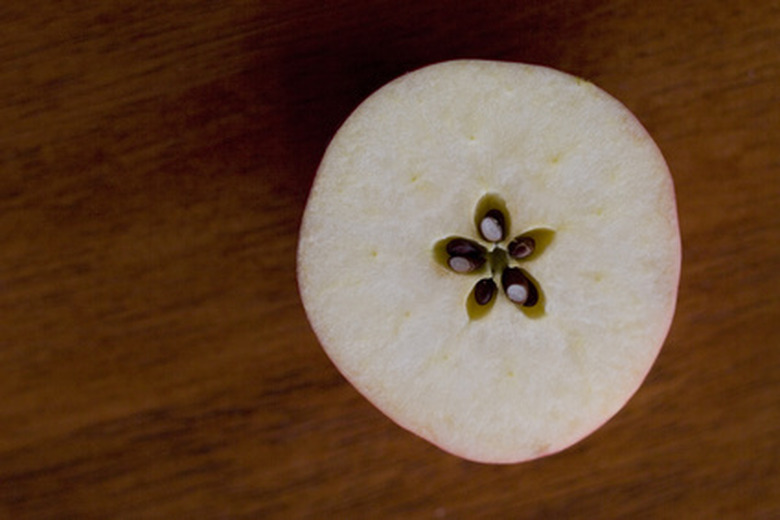Apple Seed Information
In colonial times, apple seeds played a vital role in helping the settlers create gardens and farms that included valuable food sources such as apples. As disease and cold-resistant varieties of apples became better known, seeds were eliminated as the main source of apple trees. Nowadays the varieties planted in gardens and landscape get grafted to other proven apple trees. The seeds still fascinate people who wonder if an apple can be grown from that seed they just cut out of their apple.
History
Evidence suggests that humans have been eating apples since 6,500 B.C. Apples were introduced to the United States by colonists in the 1600s. The apple seeds were packed along with a variety of other vegetable and fruit seeds meant to help the colonists survive living in the new world. In 1789, Thomas Andrew Knight of England began the first controlled apple hybridization program. This was the start of a whole new way of growing superior, pest-resistant, larger apples, a trend that continues.
- In colonial times, apple seeds played a vital role in helping the settlers create gardens and farms that included valuable food sources such as apples.
- As disease and cold-resistant varieties of apples became better known, seeds were eliminated as the main source of apple trees.
Johnny Appleseed
In the early 1800s, John Chapman, who was later nicknamed Johnny Appleseed, packed a load of apple seeds on his horse and began traveling west. He planted his first small apple orchard near Licking Creek in what was then the Territory of Ohio. The gentle, generous man continued to plant apple seeds in Ohio and Indiana. His name eventually spread across the country as much as his apple seeds.
Seeds in Apples
Apples contain five seed pockets, also known as carpels. Every pocket contains a certain number of seeds depending on the health and type of apple tree the fruit comes from. These seeds should be removed before eating or cooking with the apple.
- In the early 1800s, John Chapman, who was later nicknamed Johnny Appleseed, packed a load of apple seeds on his horse and began traveling west.
- These seeds should be removed before eating or cooking with the apple.
Planting Apple Seeds
While an apple tree may be grown from the seeds of an apple, the tree will not produce the same type of fruit as its originating apple. That's because seeds are actually a cross between the tree the fruit grew on and the variety of tree that provided the cross-pollination.
Poison
Apple seeds contain a compound called amygdalin. While some people claim the compound acts as an anti-cancer agent, if the seeds are broken, they release toxic cyanide when eaten.
Rose Apples
One type of tree grown from seeds is the rose apple tree. This tree thrives in Florida and California, although it's a native of the East Indies. Fruit from the tree grows to about 2 inches wide. The ripe fruit is green or dull-yellow with a touch of pink and features crisp, sweet, rose-scented flesh. The fruit contains one to four poisonous hard, round seeds.
- While an apple tree may be grown from the seeds of an apple, the tree will not produce the same type of fruit as its originating apple.
- While some people claim the compound acts as an anti-cancer agent, if the seeds are broken, they release toxic cyanide when eaten.
